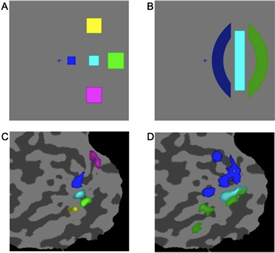A graduate student at one of Switzerland's top universities was honored by that institution for research he conducted while visiting the University of Houston Cullen College of Engineering.
Michel Akselrod won the award for the best Master's degree thesis in the field of neurosciences, from the Ecole Polytechnique Fédérale de Lausanne (EPFL).
Akselrod wrote the thesis under the guidance of EPFL professor Michael Herzog, who has an ongoing collaboration with Haluk Ogmen, professor of electrical and computer engineering with the Cullen College. Through this collaboration, Akselrod spent the 2011-2012 academic year conducting research with Ogmen at UH. Together, they investigated the visual phenomenon of apparent motion.
In apparent motion, the brain fills in the movement of objects in a series of static images, even though that movement is not actually shown. Apparent motion comes into play when watching movies, for instance, which show a series of still pictures that are perceived as a single moving image.
The question Akselrod addressed was where in the brain does this "filling in" occur—the occipital cortex, where images are first received by the brain from the retina, or other regions of the brain that are responsible for image recognition, interpretation and other higher order functions?
To study this, researchers rely on a notable characteristic of visual processing. The spatial relationships of objects recorded by the retina are roughly matched by activity in the occipital cortex. Look at the letter 'T', for example, and the neurons in the occipital cortex that fire will form a 'T'.
Other research teams have tested apparent motion by showing individuals two images that are perceived as one image of an object in motion. They then observed whether there was activity in the portions of the occipital cortex representing the space where the object was perceived to have traveled (but did not actually travel). These studies, though, produced conflicting results. Some indicated that the neurons in the early visual areas became active, while others pointed to the higher order regions of the brain as responsible for the "filling in."
Akselrod, Ogmen, and Herzog, therefore, set up a similar test, but with a twist.
"Usually apparent motion is in a direct line between the two points," said Ogmen. "What we wanted to do was use an illusion where we controlled how it filled in. So we briefly flashed a very dim curved line between the two points, making the object follow the curve. Our question was whether there would be some activity in the occipital cortex along that curve."
They found that the neurons corresponding to this arc in the occipital cortex did in fact become active. The study, therefore, lends strong support to the argument that the brain area in the occipital cortex that first receives images from the retina exhibits filling in that corresponds to the filling in we experience during apparent motion.
These results, noted Ogmen, are more than just academic. Understanding visual processing is a major component of reverse engineering the brain, one of the "Grand Challenges" for engineers in the 21st century as named by the National Academy of Engineering. Understanding how the human brain works will not only have significant medical applications, but also help advance the creation of artificial intelligence, Ogmen stated. A more sophisticated understanding of visual processing in particular will allow for improved automated navigation systems and self-guided robots.
